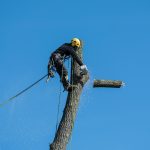Key Principles for Designing a Fire-Safe Garden Haven
When creating a fire-resistant garden design in the Welsh countryside, understanding local wildfire risks is essential. Different areas have unique vulnerabilities impacted by terrain, wind patterns, and vegetation types. Assessing these site-specific factors helps tailor a landscaping plan that minimizes fire hazards without sacrificing charm.
Balancing garden safety essentials with aesthetics requires a thoughtful approach. Plant selection, spacing, and arrangement must reduce combustible fuel loads while complementing the natural beauty of Welsh landscapes. Effective design integrates fire-smart layouts that slow or stop fire spread.
Also to read : Reliable carpet cleaning services across South London
Flame-resistant landscaping is not solely about removing plants but about strategically using fire-resistant garden design principles to create defensible spaces around homes and critical structures. This includes creating buffer zones, incorporating firebreaks, and utilizing natural barriers.
In rural Wales, this balance preserves the character of the countryside, ensuring gardens remain inviting and safe. Incorporating these core principles throughout the design phase helps prevent devastating wildfires and fosters a sustainable environment tailored to local conditions.
Additional reading : External rendering systems: durable options for building enhancement
Selecting Fire-Resistant Plants for Welsh Climates
Understanding fire-smart plant selection is vital for effective fire-resistant garden design in Wales. The Welsh climate, with its damp and mild conditions, supports a variety of flame-retardant flora. Native species typically offer strong resilience and adapt well to local soil and weather. For example, ferns and deciduous trees like birch have lower flammability compared to resinous conifers.
Choosing the right mix of Welsh garden plants focuses not only on fire resistance but also on aesthetic appeal and ecosystem balance. Non-native species can be included if they are proven flame-retardant and suitable for Welsh soil. Arranging plants in clustered groups separated by gravel or lawn zones enhances protection by limiting fire spread. Taller shrubs and trees should be spaced and pruned to avoid continuous fuel ladders that can carry flames upward toward homes.
In summary, integrating fire-smart plant selection involves prioritising species with low resin or oil content, good moisture retention, and strategic placement to create natural firebreaks. This approach supports both safety and the rich visual tapestry characteristic of Welsh countryside landscaping.
Key Principles for Designing a Fire-Safe Garden Haven
Designing a fire-resistant garden design in the Welsh countryside demands a strategic balance between beauty and safety. Central to this is a clear grasp of garden safety essentials, which revolve around lowering fuel loads and interrupting fire spread paths. This means not only selecting appropriate plants but also planning their placement to function as natural fire barriers.
Assessing the site-specific wildfire risks involves evaluating local terrain, prevailing winds, and historic fire patterns. For example, steeper slopes and wind corridors can escalate fire danger, requiring wider buffer zones or more robust firebreaks in the landscaping. Integrating these factors into Welsh countryside landscaping ensures the garden does more than look good—it actively reduces wildfire vulnerability.
The principles extend beyond plant choice to include spatial design: spacing plants to break continuous canopies, using lawns or gravel areas as fire-resistant zones, and situating flammable features away from structures. This multi-layered approach, emphasizing both prevention and mitigation, forms the backbone of a resilient fire-resistant garden design tailored for rural Wales.
Key Principles for Designing a Fire-Safe Garden Haven
Designing a fire-resistant garden design in the Welsh countryside requires integrating garden safety essentials with the unique aspects of Welsh countryside landscaping. Key to this is prioritising site-specific wildfire risks such as slope gradient, wind exposure, and local vegetation humidity. For instance, gardens on steep slopes necessitate broader defensible spaces to counter accelerated fire spread.
Flame-resistant landscaping is rooted in reducing fuel continuity by breaking up plant groupings and incorporating non-combustible zones like gravel or short grass. This strategy interrupts fire’s path while maintaining visual appeal. Plant selection must work in tandem with layout to avoid creating continuous canopies or ladder fuels that carry flames upward.
Buffer zones around structures are a critical element. These areas act as firebreaks by separating flammable plants from homes, limiting fire intensity near vulnerable points. Incorporating natural barriers such as stone walls or water features further enhances garden safety.
Ultimately, balancing aesthetic charm with rigorous fire mitigation creates a resilient environment that embraces the Welsh rural character without compromising on essential safety measures. This layered, context-aware approach is the foundation of effective fire-resistant garden design.
Key Principles for Designing a Fire-Safe Garden Haven
Creating a fire-resistant garden design in the Welsh countryside hinges on integrating garden safety essentials with the natural landscape. At its core, the approach prioritises reducing continuous fuel loads through strategic plant placement and thoughtful spatial planning. This interrupts fire pathways and slows fire spread effectively.
Understanding Welsh countryside landscaping means recognising site-specific wildfire risks. Slopes, wind direction, and local vegetation moisture guide the extent and type of defensible spaces needed. For example, steeper terrains require wider buffer zones and more deliberate firebreak placement.
Flame-resistant landscaping involves combining natural and constructed elements – using gravel beds, lawns, and physical barriers like stone walls to fragment combustible materials. This layering of fire-resistant zones disrupts fuel continuity while preserving the garden’s visual appeal.
Balancing aesthetics with safety requires selecting plants with low flammability and arranging them to avoid canopy overlap or ladder fuels. Continuous monitoring and adaptive design maintain safety over time. Together, these principles ensure a resilient garden that honours Welsh rural character without sacrificing protection from wildfire threats.
Key Principles for Designing a Fire-Safe Garden Haven
Effective fire-resistant garden design in Wales relies on integrating garden safety essentials with the nuanced demands of Welsh countryside landscaping. Central to this is understanding that flame-resistant landscaping must adapt to local vulnerability factors such as slope, wind exposure, and native vegetation moisture. For example, steeper, wind-exposed sites require wider defensible zones with breaks in fuel continuity to slow or halt fire progression.
Balancing aesthetics with safety involves more than choosing the right plants—it means creating structured spatial layouts that interrupt flame paths. This can include incorporating gravel beds, lawn strips, and stone walls as natural firebreaks, which both fragment combustible material and complement rural Welsh visual character.
Assessing site-specific wildfire risks early enables tailored safety solutions, such as buffer zones strategically placed between flammable species and buildings. Moreover, maintaining a fire-safe garden calls for continuous monitoring and adaptive adjustments to preserve practical defensible space without sacrificing garden beauty.
Thus, core principles emphasize a layered and context-sensitive approach that harmonises fire mitigation with the timeless appeal of Welsh countryside landscaping, ensuring resilience against wildfire threats while celebrating local charm.
Key Principles for Designing a Fire-Safe Garden Haven
Designing a fire-resistant garden design in the Welsh countryside begins with thorough assessment of site-specific wildfire risks. Understanding local factors—such as slope angles, prevailing wind directions, and native vegetation moisture levels—helps determine the scale and placement of defensive features needed to reduce fire hazards effectively. Steeper slopes and wind-exposed areas typically require wider buffer zones and carefully planned breaks in fuel continuity to slow fire spread.
Integrating garden safety essentials involves layering non-combustible elements like gravel and lawn strips alongside flame-resistant plants. This blend fragments fuel loads and interrupts flame pathways, offering natural firebreaks that preserve the visual harmony of Welsh countryside landscaping. Spacing plantings to prevent canopy overlap and removing ladder fuels are critical steps to prevent vertical fire transfer toward homes.
Balancing aesthetics with safety means designing a garden that feels inviting yet resilient. Incorporating stone walls and water features provides both fire protection and tactile, visual appeal. Continuous evaluation and adaptive management ensure the garden remains both a beautiful and secure refuge against wildfire threats.










